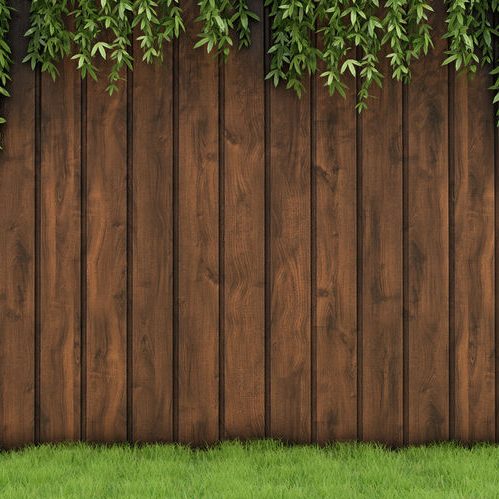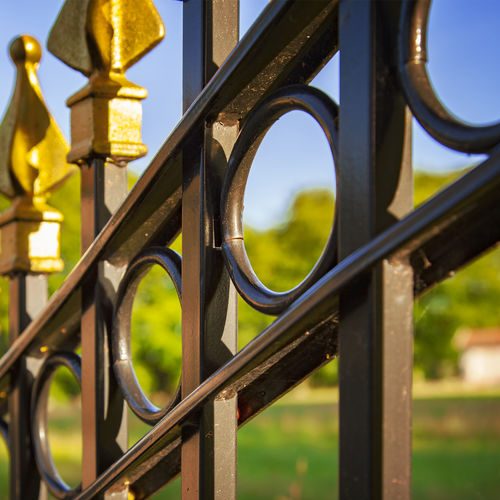 How Much Does it Cost to Get A Fence Installed?
How Much Does it Cost to Get A Fence Installed?
Fence installation serves a variety of needs – installed for security, privacy, or simple aesthetics, fences provide a large amount of utility. So the question stands – how much does it cost to install a fence? This total cost will depend on the type of fencing materials, the total area needed to be fenced, and the desired fence height. Higher fences will not only take longer to install, they are more expensive. The materials are also heavier and more difficult to work with.
The average price to install a fence is $2,388. Overlooking for a moment the desired fence height for your yard, most homeowners select a six-foot privacy fence. The average minimum cost to install a six-foot privacy fence is $3 per linear foot, with a max cost of $13 per linear foot. If you are looking for extra protection, a security gate comes in (on average) around $5,000.00.
Do I Need a Permit to Build a Fence?
Fence permits tend to be required in urban, metro areas. The exception is when they categorically are not required due to height limits. Fence permitting is not universal. Some municipalities require it, others are not so inclined. Fences that are three-and-a-half feet high and six feet high often trigger the need for fence permits. Fence materials are also a point of contention. Before you consider building a fence as part of a DIY project, consult your local municipality to see what restrictions are in place. Hiring a fence company to do your fencing installation will eliminate this need, as they will obtain the permit for you.
How Much Does it Cost to Get a Wood Fence Installed?
You may decide that installing a wood fence is the best way to go. Homeowners tend to pay on average $2,745 to install a wood fence. The average range for getting a wood fence installed is between $1,691 and $3,981. This is not a static figure, however, because it can cost only $900 or as much as over $5,000. Consult with your local fence specialist to get a bid, or estimate, on your fence installation.
Do Fences Increase Property Value?
Before you start tallying up the property value of your home according to the fence you currently have installed, take a moment to gauge a few factors. What material is your fence made of? What condition is your fence in? What are local buyers looking for? All of these questions will affect the total value that your fence contributes toward your home. For instance, if a prospective buyer has a furry animal, whether or not you have a tall, secure fence will affect their purchasing decision. Make sure your fence fits within your needs, and the demands of the market, and you can reasonably assume a value.
The best types of fence to install to add property value are the following:
- Wood. Wood fences not only give homeowners a sense of privacy, they are also one of the more attractive options on the market.
- Vinyl. Vinyl fences is maintenance free and resists pain, allowing homeowners to easily remove paint and other unwanted stains. Vinyl fences are five times stronger and four times more flexible than comparable wood fences.
- Wrought Iron. Wrought iron fences are expensive, and require vigilant upkeep. Despite this, wrought iron fences are both strong and beautiful, increasing curb appeal.
 What is the Cheapest Fence to Build?
What is the Cheapest Fence to Build?
One of the cheapest style of fences to invest in is a chain link fence. These fences usually cost $6 to $9 per foot for a four foot high fence. The downside of a chain link fence is that it is not aesthetically pleasing compared to other options. The upside is that chain link fences are durable and generally long lasting. Other cheap fencing options include found material fences, and vinyl fences. As the name implies, found material fences comprise fences made of materials you have procured from recyclable sources, such as torn-down buildings. Installation of found fences will not be free, despite the cost of materials.
Vinyl fences are more expensive than chain link fences and found material fences, but the advantage is that vinyl fences are maintenance free. Vinyl fences typically cost twice as much as wood fences, but the maintenance free aspect makes it a highly desirable choice over the long term.
Fence Installation Tools
If you are going the DIY route for installing your fence, there are a few considerations to undertake. You will, at the very least, need a DIY fencing kit. This includes, but is not limited to:
- Stakes and string.
- Tape measure.
- Ready mix concrete (accommodate for 1 ½ bags per post).
- Post Hole Digger.
- Torpedo level.
- Digging/tamping bar.
Consult with your local hardware professional concerning tools for your DIY fence installation. Make sure to accommodate for weather!
Fencing Installation Company
If you are looking for a fencing company in your area, but don’t know where to start, you are not alone. While it may seem feasible for you to purchase your own materials, gather a couple of friends, and install your own fence, what can take you weeks or even months, can be accomplished by a reputable professional company in a manner of hours or days. If you are in the market for a fence company, make sure to get multiple estimates. Getting three estimates is a classic piece of home remodeling advice for a reason. Fence installation is a very competitive business and contractors are often very eager to show up quickly and whenever you are available. While you are in the market, ask about water heater installation if your water supply is experiencing difficulties.
Fence Installation How-To
The first thing you should do when you are planning to install a fence on your own, is determine the spacing for fence posts. Decide how far apart you would like the fence posts to be. In normal circumstances, fence posts will be spaced six to eight feet apart. The corner posts are set first. Next, you will want to prepare the holes and posts. When setting the fence posts, make sure about 1/3rd of each post is buried in the ground. This helps the posts endure heavy weight and high winds. To dig the holes, use a post hole digger.
The third step is to set the posts. Place two or three shovel scoops of gravel at the bottom of each post hole before placing the posts into position. Next, you will want to attach rails to the fence posts. The final step is to install the fence boards.
Fence Repair Installation
If your fence is in need of repair, there are a couple of different options. If the repair is outside the realm of your household know-how, you can acquire help via a fence company. When considering your budget, take into account the fence’s design, and material as well as the cost of labor to complete the work. That way, you can have realistic expectations.
If you live in the Dallas, TX area, consult Mullins General Construction for all your fence installation needs. Call: (972) 535-8065.

